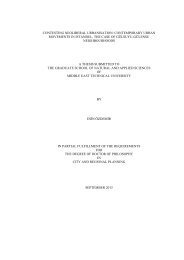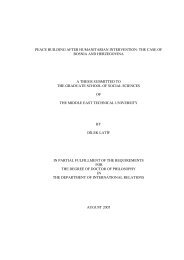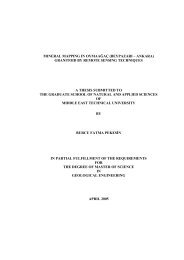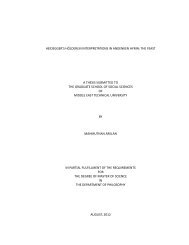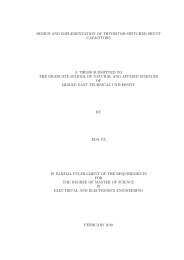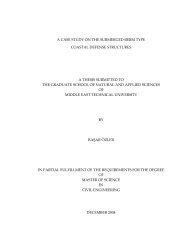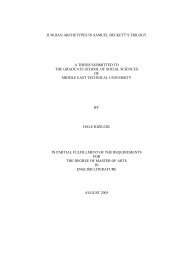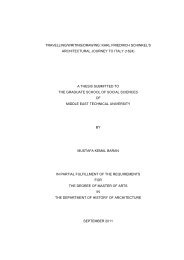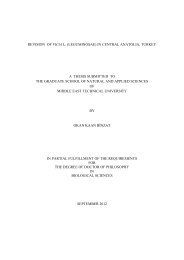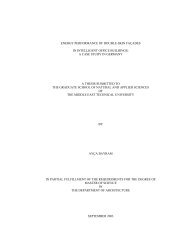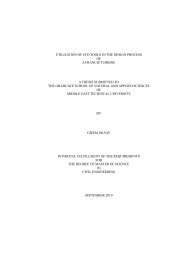View Original - Middle East Technical University
View Original - Middle East Technical University
View Original - Middle East Technical University
Create successful ePaper yourself
Turn your PDF publications into a flip-book with our unique Google optimized e-Paper software.
market is an institution of ex post coordination for more than one competing unit of<br />
commerce whose plans are particularistic only ab initio. For all commodities, there is<br />
a market when at first staccato supplies and demands are no longer technically<br />
fragmentary so that there is a formal continuum of exchanges and prices while the<br />
former is always voluntary. However, markets are not spontaneous structures since<br />
informal economies may always inveigle certain competitors out of a strict nihil<br />
obstat to the terms of an otherwise formal market. The real extent of the market is<br />
therefore not infinite. In fact power relations are an integral part of the very design of<br />
markets.<br />
Secondly, there is in fact a catalogue of configurations of markets as opposed to the<br />
Marshallian/Walrasian ideal of a market so far as a bevy of economic units and the<br />
particular pattern of relations within that modality of networking contrast with other<br />
networks of competitors and the governance models for the terms of competition<br />
elsewhere. A market can in fact be a ‘structure of roles with a differentiated niche for<br />
each firm’(Boyer 1997a:67). Moreover, price competition cannot be the solitary<br />
mechanism for the stagnant patterns of a market configuration since certain market<br />
failures incessantly commove each market configuration. ‘Thus, a large variety of<br />
markets are structurally embedded into a series of constraints’(ibid.). Research on<br />
industrial economics and microeconomic theories of technical change have in fact<br />
excogitated many forms of market configuration and/or forms of competition from<br />
partial or otherwise monopoly to cartels to oligopoly and partial or otherwise<br />
monopsony etc. to yet still other categories with contrasting degrees of competition.<br />
Here Boyer would argue that not only market is a socially instituted variable but also<br />
the exact patterns of its institutionalisation would have a definitive purchase on the<br />
macroeconomic variables(eg. welfare, growth etc.) and ultimately on the very mode of<br />
its ‘functioning’(1996a:101).<br />
Not all General Equilibrium Theories are Walrasian(De Vroey). Although Walras has<br />
been the cum laude theorist of general equilibrium, it is those tentative understandings<br />
of the contrasts between his theory and Marshall’s method for partial equilibrium<br />
60



